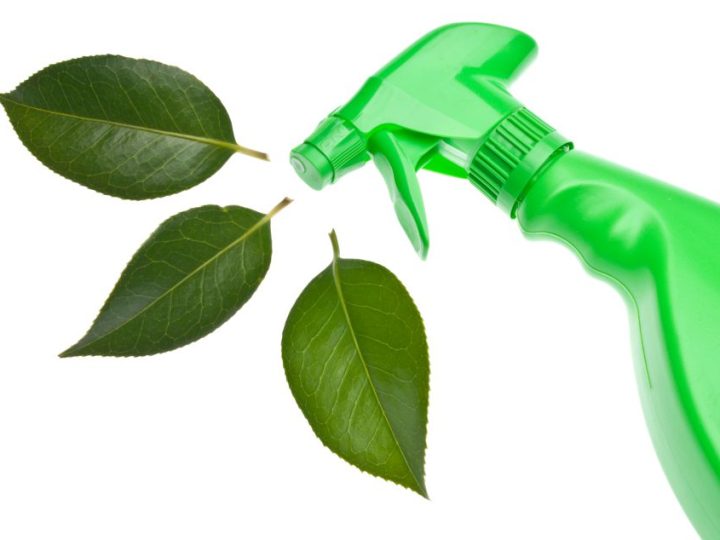

Green disinfectants represent a revolutionary approach in the realm of commercial cleaning, marrying the dual objectives of efficacy and environmental stewardship. By leveraging the power of these eco-friendly alternatives, businesses not only champion a greener planet but also significantly elevate indoor air quality. The essence of green disinfectants lies in their ability to purify and sanitize spaces while minimizing the release of harmful substances, thereby fostering a healthier and more comfortable environment for everyone. As we explore the intricacies of green disinfectants, it becomes evident that their impact extends beyond mere cleanliness, touching on crucial aspects such as health, well-being, and sustainability. This exploration aims to unravel the multifaceted benefits of green disinfectants and guide businesses in optimizing their use for a cleaner, greener future.
What are green disinfectants?
Green disinfectants are cleaning agents designed with both environmental safety and human health at the forefront. Formulated to minimize ecological impact, these products stand out by significantly reducing the presence of volatile organic compounds (VOCs), thus offering a safer alternative for the environment and indoor spaces alike. Central to their composition are biodegradable and non-toxic components, such as hydrogen peroxide and citric acid, which ensure their effectiveness against microbes without compromising the well-being of individuals or the planet. The development and utilization of green disinfectants underscore a commitment to sustainable cleaning practices that maintain high hygiene standards.
How do green disinfectants affect indoor air quality?
Green disinfectants significantly enhance indoor air quality by reducing volatile organic compounds (VOCs), commonly found in traditional cleaning products. This reduction is crucial in lowering health risks associated with chemical exposure, such as respiratory problems and other adverse health effects. By minimizing respiratory irritants, these eco-friendly alternatives provide a safer environment for individuals, particularly benefiting those with asthma or allergies. The use of green disinfectants supports not only a cleaner but also a healthier indoor atmosphere, demonstrating that effective sanitation can be achieved without compromising air quality or well-being. Using green products in your office, on upholstery and carpets, and even in glass cleaner when cleaning windows can make a significant difference.
By reducing volatile organic compounds (VOCs)
Green disinfectants significantly enhance indoor air quality by reducing volatile organic compounds (VOCs). These compounds, often found in traditional cleaning products, can evaporate into the air, contributing to pollution and various health issues. By minimizing these harmful emissions, eco-friendly disinfectants ensure a cleaner and safer indoor environment.
Lowering health risks associated with chemical exposure
Utilizing green disinfectants is key in lowering health risks linked to chemical exposure. These products are crafted with less hazardous ingredients, thereby reducing the likelihood of adverse health effects from toxic chemical interactions and safeguarding the well-being of indoor occupants.
By minimizing respiratory irritants
Minimizing respiratory irritants is another critical advantage of using green disinfectants. Traditional cleaning agents can emit substances that irritate the respiratory system, leading to discomfort or exacerbating existing conditions. In contrast, green disinfectants are formulated to cut down these irritants, fostering better respiratory health.
Enhancing comfort for individuals with asthma or allergies
For those with asthma or allergies, green disinfectants can markedly enhance comfort. By eliminating harsh chemicals and airborne irritants, these eco-friendly alternatives create a more breathable and less reactive environment. This is particularly beneficial for individuals sensitive to pollutants and allergens, promoting a healthier indoor atmosphere.
Why is indoor air quality important?
Indoor air quality is paramount for the health and well-being of individuals. Clean, pollutant-free air significantly reduces the risk of indoor health issues, ranging from minor irritations to more serious conditions, by limiting exposure to harmful chemicals and allergens. Furthermore, good indoor air quality is essential for enhancing comfort and productivity, making it a critical consideration for both residential and commercial spaces. By prioritizing clean air, individuals and organizations can create environments that are not only healthier but also more conducive to overall satisfaction and efficiency, underscoring the importance of maintaining high air quality standards.
For health and well-being
Optimal indoor air quality is essential for health and well-being. It ensures that individuals are in a healthy living environment, significantly contributing to both physical and mental wellness. Clean air facilitates easy breathing and reduces the likelihood of health complications related to air quality, underscoring its importance for a healthy lifestyle.
Reducing the risk of indoor health issues
Maintaining high indoor air quality is crucial in reducing the risk of indoor health issues. By minimizing the presence of pollutants and irritants, it significantly lowers the potential for respiratory problems, allergies, and other health conditions, promoting a safer and more comfortable living and working environment.
For reducing pollutants
A key aspect of indoor air quality is its role in reducing pollutants that can accumulate in enclosed spaces. Effective strategies such as regular ventilation, the use of green cleaning products, and proper HVAC system maintenance are vital in decreasing pollutant concentrations, ensuring a cleaner and healthier indoor atmosphere.
Limiting exposure to harmful chemicals and allergens
Improving indoor air quality is instrumental in limiting exposure to harmful chemicals and allergens. Opting for eco-friendly cleaning solutions and materials that do not emit volatile organic compounds or other harmful substances helps protect occupants from potential health risks associated with chemical exposure and allergenic reactions, making it a critical consideration for maintaining a healthy indoor environment.
What are the common types of green disinfectants?
Among the array of options, hydrogen peroxide-based cleaners emerge as a frontrunner, renowned for their broad-spectrum efficacy against a diverse range of microbes. This makes them an ideal choice for ensuring cleanliness and safety in both homes and workplaces. Another key player in the green disinfectant arena is citric acid-based cleaners. Celebrated for their non-toxic and biodegradable properties, these cleaners represent a safe and environmentally responsible alternative to conventional disinfectants. Opting for these common types of green disinfectants allows individuals and businesses to maintain high hygiene standards while actively contributing to environmental sustainability.
Hydrogen peroxide-based cleaners
Hydrogen peroxide-based cleaners excel in their ability to tackle a wide range of microbes, making them a preferred choice for comprehensive disinfection. Their effectiveness spans across bacteria, viruses, and fungi, providing a versatile and potent solution for maintaining cleanliness without the harsh side effects of traditional chemicals.
Effective against a wide range of microbes
Leveraging the antimicrobial prowess of hydrogen peroxide, these cleaners are uniquely effective in purging environments of a broad spectrum of pathogens. This ensures enhanced hygiene and safety in various settings, from homes to commercial spaces.
Citric acid-based cleaners
Citric acid-based cleaners emerge as a standout choice for those prioritizing non-toxic and biodegradable cleaning solutions. Sourced from citrus fruits, they embody the principles of green cleaning by offering a safe, effective, and environmentally friendly alternative.
Non-toxic and biodegradable option
These cleaners not only ensure effective disinfection but also champion environmental sustainability. Their biodegradable nature means they break down harmlessly in the environment, minimizing ecological impact while upholding high standards of cleanliness and safety.
How to choose the right green disinfectant?
Choosing the right green disinfectant requires careful consideration of several key factors to ensure effectiveness, safety, and environmental sustainability. At the forefront is the efficacy against pathogens; it’s crucial to opt for products that have been proven to combat specific germs of concern. Certifications and eco-labels offer valuable insights into a product’s compliance with environmental and health standards, acting as a beacon for consumers seeking safer alternatives. Moreover, verifying that products have been tested against specific germs confirms their effectiveness in real-world scenarios. By prioritizing these aspects, consumers can make informed choices that align with their hygiene requirements while supporting environmental objectives.
Consider the efficacy against pathogens
Prioritizing the efficacy against pathogens is essential when choosing a green disinfectant. Selecting a product that has demonstrated effectiveness in neutralizing the specific types of bacteria, viruses, or fungi you’re targeting ensures a healthier, safer environment.
Look for products tested against specific germs
It’s important to look for products tested against specific germs. This verification means the disinfectant has been rigorously evaluated and proven to combat the pathogens of concern effectively, offering reliable protection and peace of mind.
Check for certifications and eco-labels
Checking for certifications and eco-labels is a key step in identifying safer and more eco-friendly disinfectants. These marks of approval signal that a product adheres to strict health, safety, and environmental standards, guiding consumers towards more responsible choices.
Seek out products with environmental certification
Seeking out products with environmental certification is highly recommended. Such certifications denote products that have a minimized environmental impact throughout their lifecycle, from production through disposal. Opting for these products supports environmental health while maintaining high cleanliness and safety standards.
What are the limitations of green disinfectants?
While green disinfectants present a leap forward in eco-friendly cleaning, they are not without their limitations. A primary concern is that they may require longer contact time to be effective, necessitating that these solutions stay on surfaces for an extended period to ensure thorough disinfection. Furthermore, they exhibit a limited spectrum of effectiveness against pathogens, meaning not all green disinfectants can eliminate every type of germ. This limitation underscores the importance of selecting the right product for specific needs and, at times, the use of multiple products to address various pathogens. Acknowledging these limitations is essential for integrating green disinfectants effectively into a holistic cleaning strategy.
May require longer contact time
Green disinfectants often may require longer contact time on surfaces to ensure their full effectiveness. This extended duration is necessary to achieve the desired level of germ elimination, distinguishing them from traditional disinfectants that may act more quickly.
Need to remain on surfaces longer to be effective
Due to their eco-friendly formulations, these products need to remain on surfaces longer to be fully effective. This requirement is essential for maximizing their disinfecting power and ensuring environments are thoroughly sanitized.
Limited spectrum of effectiveness against pathogens
A notable limitation is their limited spectrum of effectiveness against pathogens. Not every green disinfectant can combat all types of germs, necessitating careful selection or the use of multiple products to ensure comprehensive coverage.
Not all are effective against all types of germs
Furthermore, not all green disinfectants are effective against all types of germs. This variability in efficacy underscores the importance of choosing the right disinfectant for the specific pathogens present, ensuring optimal cleanliness and safety in various settings.
How can the use of green disinfectants be optimized?
Optimizing the effectiveness of green disinfectants involves adopting practices that enhance their performance while upholding environmental principles. Regular ventilation plays a critical role, as it facilitates better air exchange and diminishes the concentration of chemicals, fostering a healthier indoor atmosphere. Moreover, following the manufacturer’s instructions for use is essential. This includes respecting the recommended contact times and application methods, ensuring that the disinfectants can deliver their full germ-killing potential. By implementing these strategies, users can significantly boost the efficiency of green disinfectants, contributing to a cleaner, safer, and more eco-conscious environment.
Regular ventilation
Regular ventilation is crucial in enhancing the effectiveness of green disinfectants. It significantly improves air exchange and lowers the concentration of chemicals in indoor environments, creating healthier spaces conducive to well-being.
Improves air exchange and reduces chemical concentration
By boosting air exchange through proper ventilation, the effectiveness of green disinfectants is supported, while also contributing to a decrease in chemical concentration. This action ensures that indoor air remains fresh, reducing pollutants and enhancing the safety and comfort of the environment.
Following manufacturer’s instructions for use
Following the manufacturer’s instructions for use is essential to maximize the benefits of green disinfectants. These guidelines help ensure that the products are used correctly, including the right application methods and contact times, optimizing their disinfecting power.
Ensures effectiveness and safety of the product
Adherence to these instructions guarantees both the effectiveness and safety of the disinfectant. Proper use, as per the manufacturer’s guidance, ensures that the product achieves its intended germ-killing efficacy, providing reliable protection while upholding environmental and personal safety standards.



